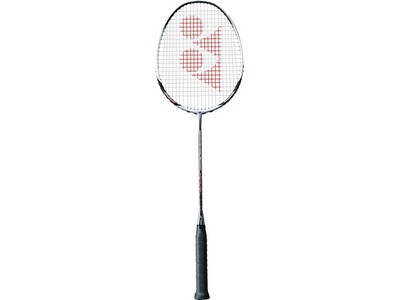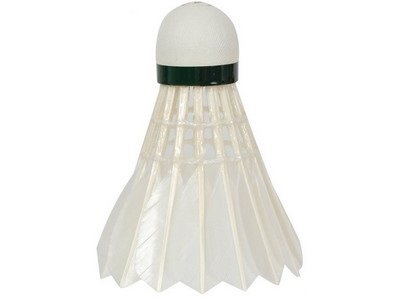

How To Choose a Badminton Equipment
Badminton is one of the fastest racket sports in the world. Concentration, good conditioning and perception are all important for playing. In addition, every player needs equipment, ideally the equipment that suits each individual best. So how to choose the right badminton racket and shuttlecock and what are the rules of this sport?

What is badminton played with?
Badminton rackets differ in weight, rigidity, balance and other properties. If you are just starting out with badminton, choose a racket for beginners. Over time, you will refine your own style of play. Then it will be time to choose a racket according to your style of play.
Important parameters for choosing a badminton racket
Material
Rackets are made of graphite, titanium and carbon, which are characterized by high rigidity and low weight. Aluminum rackets are also popular, but they deform more easily.
What material to avoid?
Today, wooden rackets are hardly used anymore. Very rarely do you come across steel rackets - usually only in supermarkets. These rackets deform and are heavier, so they put greater strain on your wrist. They are also harder to control.
Weight
This can greatly affect performance, so it is desirable to avoid heavier models. The normal weight of rackets without strings is 80-120 grams. If you play only occasionally, a heavier racket over 100 grams will suffice. However, if you plan to play often, we recommend lighter rackets. This will prevent excessive strain on your wrist.
The lighter the racket, the better the control:
Balance
The balance of a racket expresses the distribution of its weight. It is measured from the end of the handle to the head of the racket. The racket can be balanced in different ways:
The balance can be partially adjusted with a suitably selected grip.
Flexibility
There are two basic principles of racket flexibility:
- The more flexible the racket, the better it is controlled - the better you can defend.
- The stiffer the racket, the faster the game, but the racket is harder to control - it attacks better.
For each racket, there are seven classes of flexibility:
Frequently asked questions when choosing a badminton racket
Which racket is best for a beginner?
If you are just starting out with badminton, we recommend a flexible to medium-flexible racket with a balance in the hand or in the middle. Avoid rackets balanced in the head (above 315 mm). These are designed for advanced players with an offensive style. If you are choosing a racket for a child or a young player, choose light rackets weighing up to 90 g.
What material should the racket I buy be made from?
Try to choose graphite, titanium and carbon rackets, which are characterized by high rigidity and low weight. Aluminum rackets are also popular, but they deform easily. Avoid wooden and steel rackets, which are difficult to handle and, due to their higher weight, they strain the wrist more.
Is a more expensive racket always better?
It cannot be said unequivocally that a more expensive racket will be a better choice for every player. The individual models differ from each other mainly in stiffness, balance and weight. Each player has a different style, and a racket that suits an attacking player may not suit a more technical player. In general, however, it can be said that more expensive rackets are made of higher quality materials and a stiffer structure and less deformability can be expected.
How do I know my playing style?
Simply put, game styles can be divided into offensive and technical. The offensive style of play is characterized by sharp blows, most often struck in the back of the court. Rackets suitable for this style are usually balanced in the head and are stiffer for faster shots. Conversely the technical style of play can be recognized by the tendency to accurately place the shuttlecock in places that the opponent does not have covered. Rackets for technical styles are balanced in the hand and have higher flexibility for better maneuverability.
When choosing a shuttlecock, the most important considerations are the material from which it is made and its speed. It is these two parameters that have the greatest impact on how the game will go. You should choose the shuttlecock according to your own skill, but you do not have to be too afraid to think economically.
Important parameters for choosing a shuttlecock
Material
The shuttlecock consists of a cork or plastic head, a so-called ‘skirt’, and a speed tape. The material of the shuttlecock impacts on various other properties (like speed and weight). The most common are:
Speed
When you play the ball from the back line to the opposing side, the ball will fly about 30cm longer/ faster.
Some manufacturers distinguish speed by colored stripes on the cork head (green - slow, blue - medium, red - fast).
The speed of the shuttlecock is also affected by temperature, humidity and altitude. For advanced players, it is optimal to aim for a speed of 77 at 20–30°C and 78 at 15–25°C depending on conditions.
Frequently asked questions when choosing a shuttlecock
Which shuttlecocks are more suitable for beginners?
For beginners, but also recreational play for more experienced players, we recommend plastic shuttlecocks. Compared to feather shuttlecocks, they are more durable and cheaper. Although they have worse flight characteristics, the difference is insignificant for a beginner.
What influences the shuttlecock's behavior during play the most?
In addition to the technique and force of the impact, the material from which it is made has the greatest influence on the flight characteristics of the shuttlecock. Feather shuttlecocks are faster. Advanced and professional badminton players use them. Their disadvantage is the greater susceptibility to damage compared to plastic shuttlecocks.
The speed of the shuttlecock is also affected by temperature, humidity and air density. The speed of the shuttlecock is indicated by the speed tape (green = slow, blue = medium, red = fast), or by a number (75-79).
Carbon shuttlecocks combine the best of both worlds. The shuttlecock has the flight characteristics of the feather type, but the strength of the plastic onel. The pioneer of this technology is the Victor Carbonsonic CS 2 shuttlecock.
Frequently asked questions about badminton
What are the rules of the game?
Court
Standardized court dimensions:
At the edges should be the upper part of the net at a height of 1.55 m from the ground, in the middle 1,524 m. The net itself is 76 cm high and 6.1 m long. The court is marked out by lines 40mm wide, all of which are part of the playing area.
Game
In the game, there are two opponents (or two sets of to) who hit the shuttlecock over the net with rackets. The goal is to force the opponent to make a mistake, i.e to place the shuttlecock on the opponent's side so that they cannot play it but it falls within the area of play.
Mistakes
Scoring
For all disciplines, i.e singles and doubles for men and women, the match is won by winning 2 sets (first to 21 points). The party that wins each exchange/ rally gets a point. At 20:20, the game continues until one of the parties scores 2 points in a row. If the score reaches 29:29, the party that reaches the 30th point first wins.
Submission
Serves the party that won the previous exchange, or the set in the case of the first submission of the set. The serving of the first shuttlecock of the match will be determined by the draw. The serving player stands in either the right (for an even number of points) or the left (for an odd number of points) rectangle. The ball must be played in the opposite rectangle. It is served from below, the stroke must be below waist level.
Disciplines
Where can you play badminton?
Badminton can be played recreationally almost anywhere where there is a bit of space for players - at home over a net, on the beach, on the street or on a volleyball court. Enthusiasts and active players usually opt for a properly defined court.
Glossary - badminton
Lob
A shot that is played from the bottom of the net and flies in an arc to the back line of the opponent's court.
Clear shot
A shot that is played from the back of the court and reaches the back line of the court on the opponent's side. A well-played clear is especially effective in singles, because it forces the opponent to move to the back of the court. This will open up the front of their court for you.
Drop
A shot that is played from the back of the court to just behind the opponent's net. Used when you want to force an opponent to go to the net to expose the back of his court. You should hit your next shot there.
Glossary

